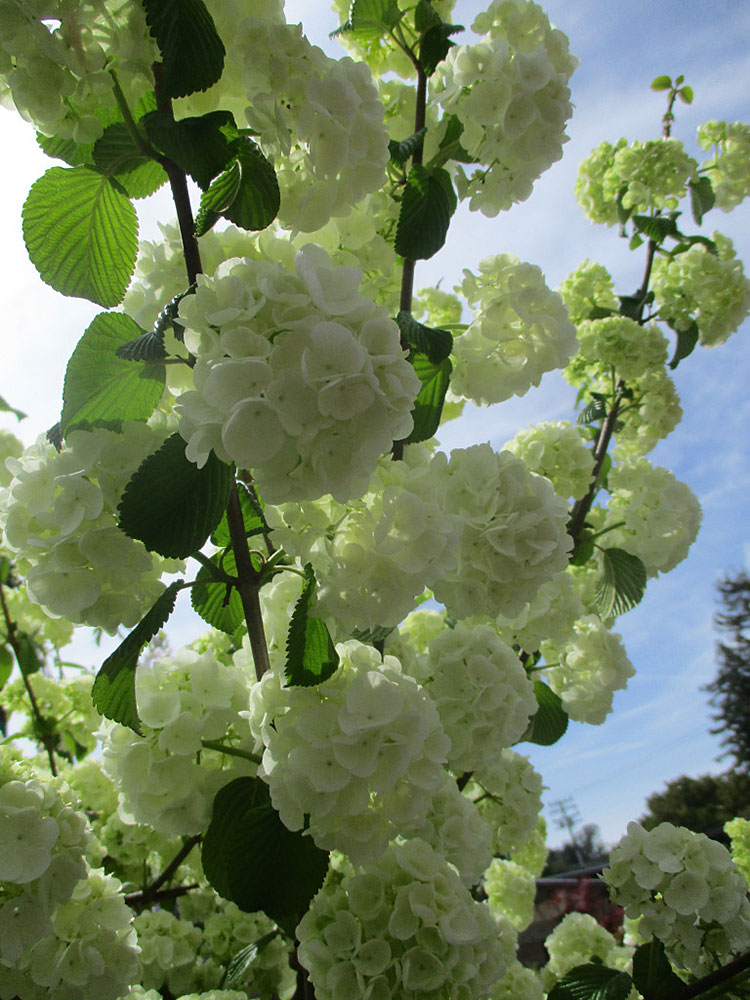By Tony Tomeo
Winter has potential to be a slow season for gardening. Simple gardens may not require much dormant pruning. Established gardens may not require much planting. Where winters are cold and perhaps snowy, no one wants to go outside anyway. Those who go out may not be able to accomplish much. Nonetheless, winter is the season for planting bare root stock, which is now available.
Bare root stock starts to move into nurseries before the last Christmas trees move out. Growers start to dig and package it as it goes dormant for winter. They separate it completely from the soil it grew in, leaving the roots bare. Some bare root stock is available with bags of damp sawdust protecting its roots. Most goes into bins of damp sand to protect the roots while at retail nurseries.
Unlike canned (potted) nursery stock, bare root stock must get into the garden as soon as possible. It will not survive long if it gets warm enough to start growing prior to planting. Nor will it survive if roots desiccate. Unbagged bare root stock can soak in water for a limited time. For planting, roots should flare outwardly. Soil amendment should be limited. Graft unions must be above grade.
Bare root stock is lightweight, compact, and easy to handle in bulk. Therefore, it is less expensive than canned stock. It is also easier to get home and plant. Because so many individual plants fit into limited space, many more cultivars are available from nurseries. Even more are available by mail order. Bare root stock disperses roots and gets growing more efficiently than canned stock.
Deciduous fruit trees might be the most popular bare root stock. This includes apple, pear, persimmon, fig, mulberry, walnut, pomegranate and the stone fruits. (Apricot, cherry, peach, plum, prune and nectarine are stone fruits.) Grape, currant, gooseberry, blueberry, blackberry and raspberry bare root stock are also available. So are perennial rhubarb, asparagus, artichoke and strawberry.
Ornamental bare root stock includes rose, snowball bush, forsythia, wisteria, flowering crabapple, poplar and many more.
Apricot
Apricot has major history in California. For a very long time, it was the main agricultural commodity is several regions, particularly the Santa Clara Valley. It remains a significant commodity within portions of the San Joaquin Valley. Urban sprawl replaced orchards in other regions. However, apricot trees now inhabit some urban gardens. The climate here is as ideal for them as it ever was.
Garden variety apricot trees are not quite like orchard trees. Dwarfing rootstock keeps them somewhat more compact. They might otherwise grow taller that twenty feet. Production is best during the first three decades or so, before they begin to slowly deteriorate. Orchard trees are already due for replacement by then. Many more cultivars are practical for home gardens than for orchards.
Apricot trees, which are mostly of the species Prunus armeniaca, are certainly not ‘low maintenance’. They require specialized pruning annually, while dormant for winter. Otherwise, they produce more fruit than they can support. New trees are unlikely to produce any fruit during their first season. The deciduous foliage falls neatly in autumn. White or slightly blushed spring bloom is striking.
•••
Horticulturist Tony Tomeo can be contacted at tonytomeo.com.
